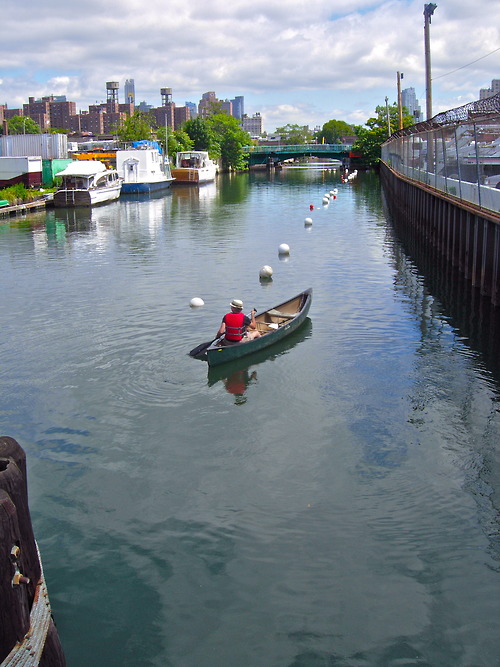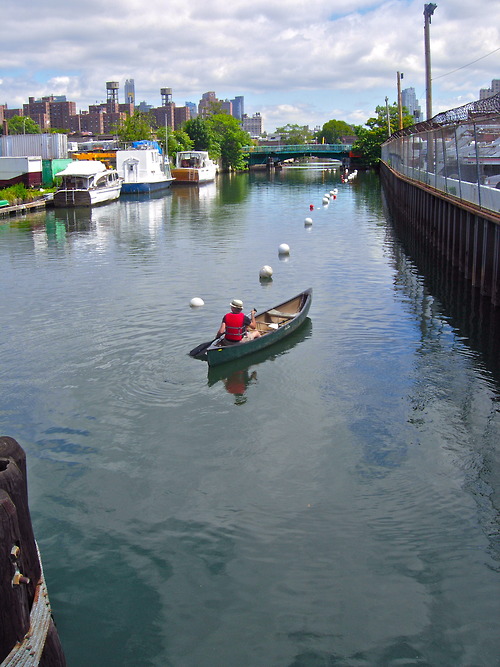 Paddling the urban frontier.Photo: Sarah GoodyearYou might think that living down the street from a Superfund site is a bad thing.
Paddling the urban frontier.Photo: Sarah GoodyearYou might think that living down the street from a Superfund site is a bad thing.
I’ll admit that it has its downsides. The Gowanus Canal, which wends its sluggish way through the streets of Brooklyn just a half-mile from my house, can smell awfully bad. For decades, it was an industrial dumping ground, and the result is a pungent mix of petrochemicals, rot, and plain old sewage. People in the neighborhood have been complaining about it for years. Last March, the federal government finally stepped in and declared it a Superfund site.
The Gowanus doesn’t just smell bad. It can look pretty scary, too. Rainbows of oil shimmer on the surface. Random objects bob along the murky waters. Sometimes they are identifiable — a log, a Frisbee, a rubber glove. Sometimes you can’t tell exactly what they are. And sometimes you wish you couldn’t.
One of the things that often floats down the canal is human poop. That’s right: New York’s sewage treatment infrastructure is so antiquated that when it rains a lot, the system gets overwhelmed and raw sewage goes spilling into the city’s waterways — including the already foul canal.
During the megastorm of this past Sept. 16, which spawned two tornadoes and dumped buckets of rain on the city, the canal was inundated with sewage. And of course, before long, the result was on YouTube. It’s not as funny as the hilarious tornado dudes (if you haven’t seen them, here they are in all their glory), but it is pretty amazing that in the 21st century, the biggest city in the world’s richest nation is handling its waste this way.
Still, in spite of all the toxic crap that permeates it — or more likely because of that crap — the Gowanus has become a focal point for artists, scientists, and urban planners who see it as a grand opportunity. There’s a canoe and kayak club called the Gowanus Dredgers. There’s a proposal to clean and protect the canal using a massive colony of oysters, and another proposal that calls for the creation of a “sponge park” that would filter the pollution and create a waterfront oasis for the neighborhood’s people. There’s a dedicated team of urban divers who are working to educate the public about the dangers and potential of the canal (and yes, sometimes they actually go in it). New York mayor Michael Bloomberg’s administration has even just announced a $1.5 billion plan to prevent untreated sewage from reaching the canal and waterways like it.
Over the next several months, I’ll be taking a closer look at the canal and the people working to save it. For a 1.8-mile-long stretch of water, it’s got a lot of stories to tell.


